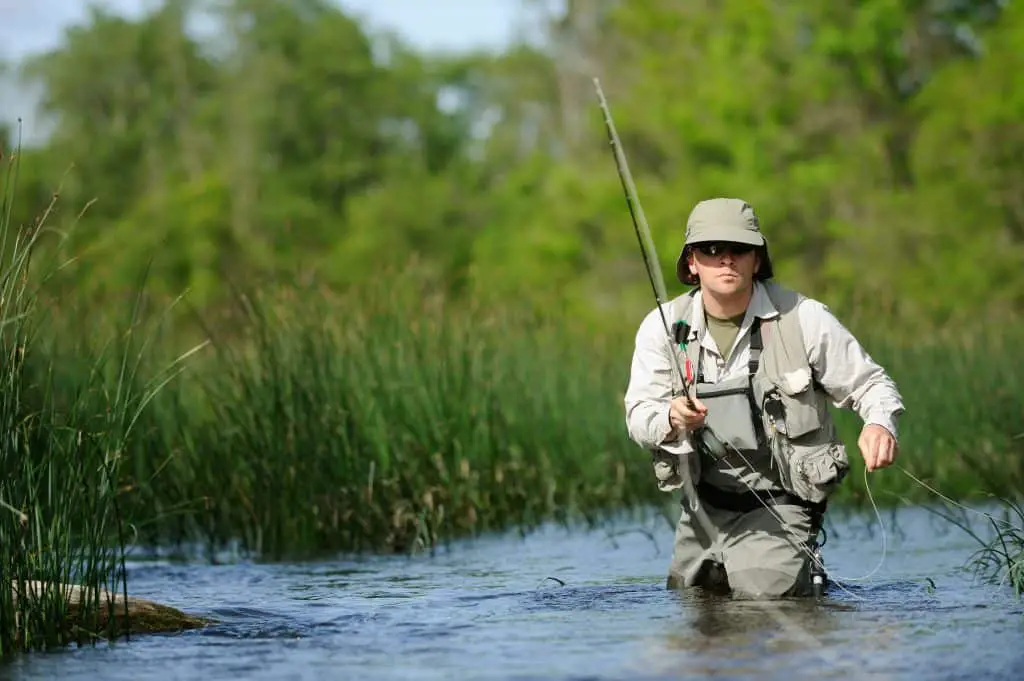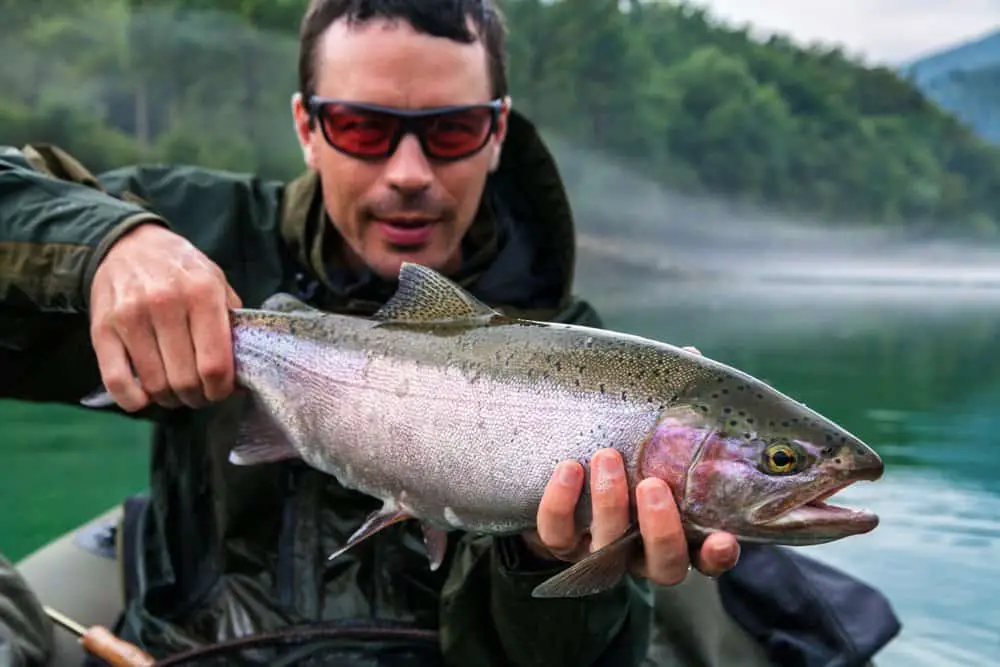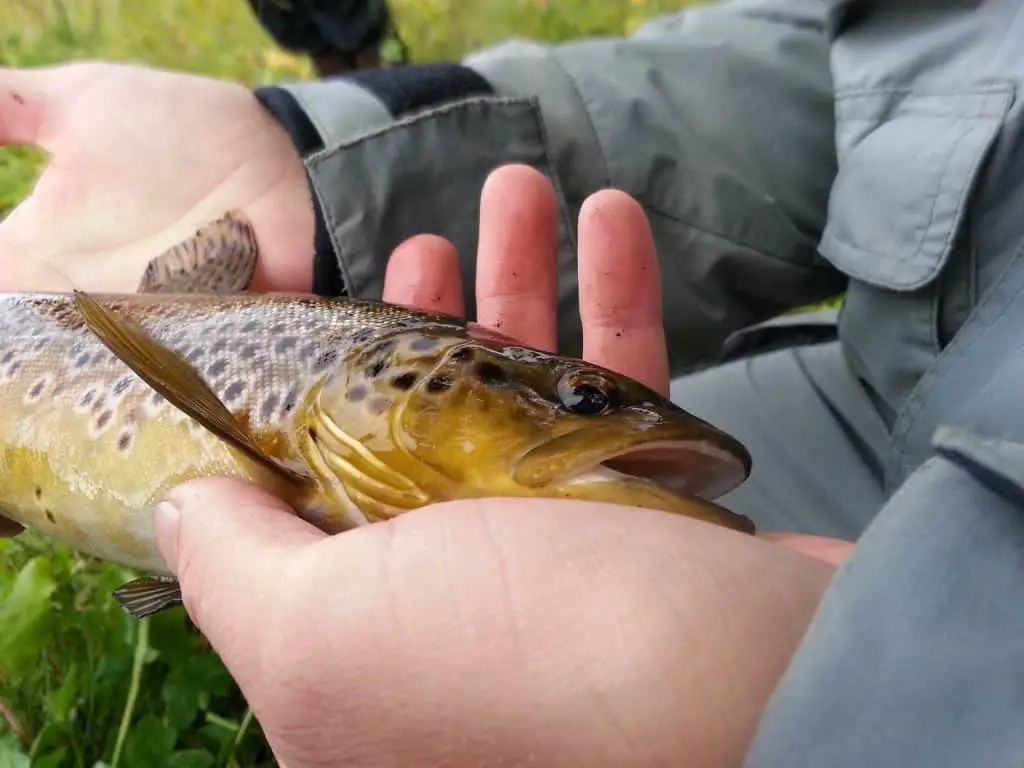As an Amazon Associate we earn from qualifying purchases.
For years, I tried to find a good alternative to the fishing vest. I went with sling packs, chest packs, hip packs – the whole gamut. Yet I keep coming back to the vest. For me, it’s the most comfortable, and the most convenient. If you’re in that same camp, then you’re likely always on the lookout for the best fly fishing vest for the money.
Well, you’ve come to the right place. Today I’ll go over what you need to look for in a vest, and then I’ll briefly review which one I believe is currently the best fly fishing vest for the money.
Table of Contents
Finding the Best Fly Fishing Vest For the Money
I want to start off by saying that I know the vest isn’t for everyone. There’s a reason slings, hip packs, and chest packs exist – they work well for a lot of anglers. But I grew up using a vest, and I’ve yet to find a sling or chest pack that’s as comfortable and convenient – for me – as a vest.
The point here isn’t to knock other gear-carrying options; rather, it’s to help folks who know the vest is their preferred product in finding the best one possible.
And if you’re still on the fence, then go to your local fly shop and try on different options. That’s how I ended up knowing that I prefer vests over anything else, and it’s how you’ll figure out what’s best for you.
Weight
The first, and most important, aspect to look for in a fly fishing vest is its weight. Because the vest sits evenly on both of your shoulders, you’ll be putting all the weight of your fly boxes, tippet spools, nippers, floatant, indicators, spare water bottles, lunch, and anything else you need on the river, squarely on your shoulders. Your lower back takes some of the strain, too. And seeing as both the shoulders and lower back are key to fly fishing in general, it’s important to not overload either area.
So, before you go cramming your vest with everything you need to catch trout, make sure you find one that’s incredibly light when empty. Vests that are largely made from mesh, don’t have integrated zingers/bungee cords, and use plastic instead of metal for the net D-ring on the back, are noticeably lighter than vests without those features.
Often, companies will use the heavier, sturdier materials in order to tout durability, but the reality is that they’re often just adding weight. What you’re looking for instead of thick, bulky fabric is tear-resistant, lightweight, breathable material.
Zippers
I had a vest once that had all-button pockets. In theory, it wasn’t a bad idea. No more fumbling with zipper pulls on the river sounds promising.
In execution, though, it was terrible, especially when it was cold and I was wearing gloves. So, zippers are an absolute must.
The zippers need to have solid, reliable pulls, and need to be vertical instead of horizontal. I fished vests with horizontal zippered pockets for years, and never knew what I was missing until I got one with vertical pockets. It seems trivial, but it makes a huge difference in how easy it is to access your gear.
Roomy Back Pocket
Whether you use the big back pocket to store a net, a spare jacket, trash, or water, your vest needs to have a big back pocket. I’ve even hauled out fish in the back pocket of my vests (harvested legally from waters that can sustain the harvest, of course).
It’s nice to have all that extra room for additional layers, especially in the spring and fall when rain and snow show up without much notice. The bulk of adding a spare jacket to the back pocket isn’t too bad, especially once you get used to it.
More Space
Remember what Tim Allen said on Home Improvement all the time? “More power!”
Well, take that same idea, but change it to thinking about the amount of pockets and storage space in your vest. When you pick one up, you want to think to yourself I’ll never fill all of these pockets.
Of course, you’ll fill them, because we always find a way to clutter up our vests, but you want one that has enough room for everything. Find one that you legitimately think you’ll have a hard time filling full with your current tackle. Then, you’ll know you’ve found the vest that’ll grow with you.
So what is the best fly fishing vest for the money?
When you take all the criteria I listed above, all signs point to the Orvis Ultralite vest as the best fly fishing vest for the money. It’s outrageously light, has more room than I know what to do with, vertical zippered pockets, and that nice big roomy back pocket. The Ultralite even has a wallet-friendly price, so you won’t have to talk yourself into springing for this one.
Do you prefer a vest? Or something else? Do you have a favorite vest? Drop a comment below and let us know.
Amazon and the Amazon logo are trademarks of Amazon.com, Inc, or its affiliates.




